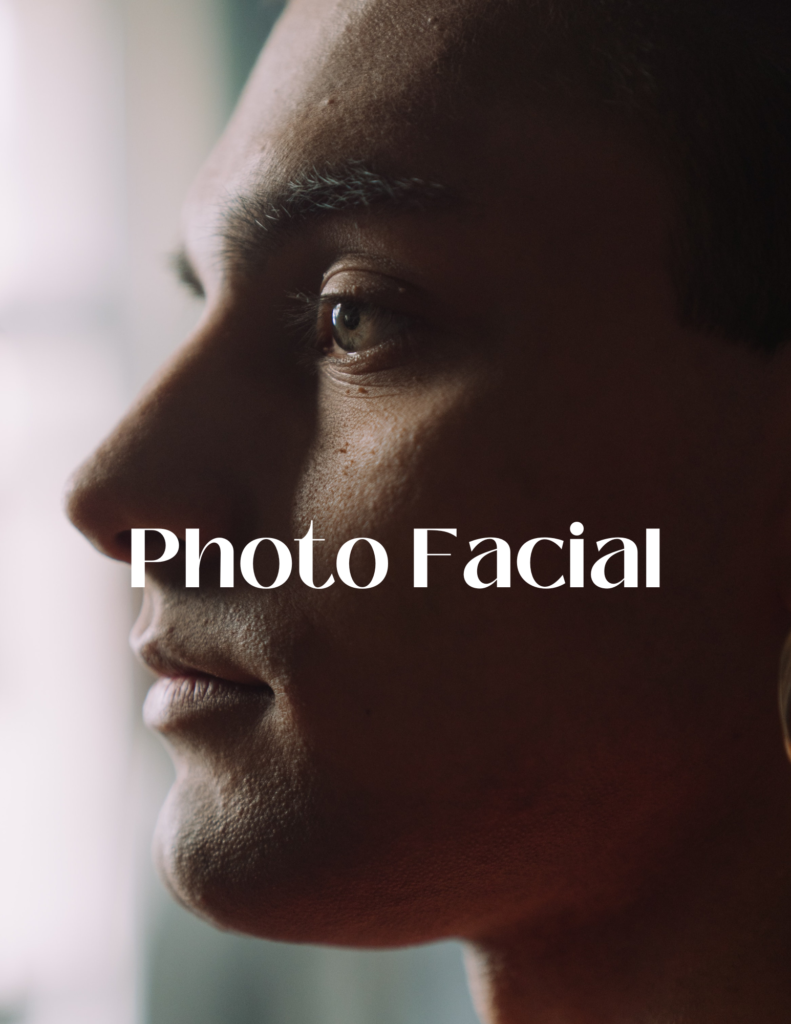SKIN BRIGHTNING +TEXTURE

Discover the power of a photofacial, an FDA-approved, non-invasive skincare treatment that harnesses light-based technology to effectively reduce the signs of aging, address sun damage, Rosacea, vascular imperfections, and hyperpigmentation. As one of America's most sought-after non-invasive cosmetic treatments, photofacial is ideal for both men and women seeking to enhance their skin's appearance, achieve a more youthful look, and experience revitalization. Trust in the transformative capabilities of photofacial for radiant and rejuvenated skin.
What does IPL improve?
-
Lightens pigmented lesions, melasma, sun damage for a more even skin tone.
-
Improves redness aka “flushing”.
-
Effectively minimizes redness caused by broken capillaries and rosacea.
-
Stimulates collagen and elastin production, enhancing your skin's firmness and elasticity
|
Before your treatment It is imperative that you do not have direct sun exposure (20 minutes or more of direct sunlight) on your skin 2-4 weeks prior to your treatment. This includes artificial tanning and/or self-tanners. You also need to refrain from taking any medication that has light sensitive side effects. 72 hours (about 3 days) prior to treatment, you should refrain from using any alpha hydroxy acids, beta hydroxy acids, prescribed retinol (Vitamin A), vitamin C, physical exfoliants, chemical exfoliants, or enzymatic exfoliants. You also need to protect your skin by wearing 30-50 SPF with zinc or titanium dioxide. |
After your treatment
In the first few day's post treatment, you will see your brown pigmented area on the face become more intense in color. Allow these spots to resolve themselves without picking or scraping. They will slough off on their own within 7 days, leaving clear, rejuvenated skin. Refrain from direct sun exposure and continue wearing 30-50 SPF with zinc or titanium dioxide. |

Experience the transformative effects of a chemical peel, a skin-resurfacing treatment that removes outer layers of skin. This exfoliation process eliminates dead skin cells, allowing smoother and more youthful-looking skin to emerge. Chemical peels effectively address sun damage, fine wrinkles, skin discoloration, active acne, and acne scars.
|
Before your treatment For the week leading up to your peel, you’ll be asked to stop using prescription retinoids as well as any products that contain alpha hydroxy acids, like glycolic acid; beta hydroxy acids, like salicylic acid; or benzoyl peroxide. You’ll also need to avoid waxing, electrolysis, depilatory creams, and laser hair removal for a week before the procedure.
These ingredients and treatments can temporarily weaken the integrity of the skin’s protective barrier and make skin more prone to burning and irritation.
|
After your treatment
Once the peel solution penetrates completely, your esthetician will apply sunscreen, to protect your skin. You’ll leave the office with the solution still on your skin and instructions to rinse it off in four hours. After you rinse it off, you’ll be free to apply makeup until the peeling begins. Depending on which formula you had, you’ll also receive three to five towelettes for home use. They contain vitamin C and tretinoin (the active ingredient in Retin-A) to boost the peel’s exfoliating effects and encourage the outer layers of skin to slough off. Because you’re removing the solution at home, you play a big role in making sure your recovery goes well and you end up with the results you want.
|
